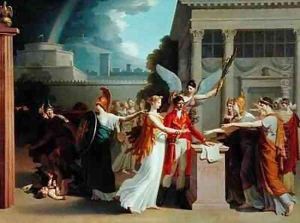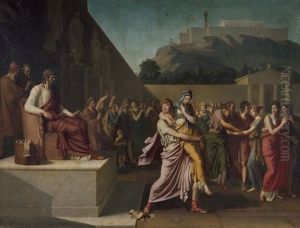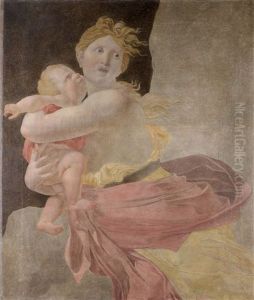Anatole Devosge Paintings
Anatole Devosge was a French painter born on February 8, 1770, in Dijon, France. He was the son of François Devosge, who founded the École de Dessin in Dijon, an institution that Anatole would later direct. His early life was marked by the rich artistic tradition of his family and his father's influence, which played a significant role in his artistic education and development.
Devosge initially trained under his father before he moved to Paris to further his studies. There, he became a pupil of the renowned Jacques-Louis David, the leading French painter of the neoclassical style. Under David's mentorship, Devosge honed his skills and was exposed to the intellectual and artistic circles of the time. His style was heavily influenced by the neoclassical movement, characterized by an emphasis on simplicity, straight lines, and a clear form, harking back to the art of ancient Greece and Rome.
During the French Revolution and the Napoleonic Wars, Devosge's career was somewhat affected, as were those of many artists. However, he managed to secure commissions and continue his work. Notable among his paintings are religious works and historical scenes, which were in line with the neoclassical taste for subjects drawn from history and mythology.
After the fall of Napoleon, Devosge took on an important role in his hometown of Dijon as an educator and artist. In 1816, he succeeded his father as the head of the École de Dessin, where he influenced a new generation of artists. His tenure as director lasted until his retirement in 1849, a year before his death.
Devosge was not only a painter but also a respected teacher, and his legacy includes both his artworks and his contributions to art education. He passed away on January 16, 1850, in Dijon. His works, while not as widely recognized as those of his contemporaries, are still studied for their embodiment of neoclassical principles and their role in the art history of France.


